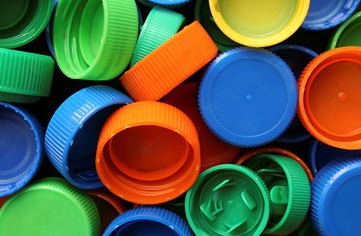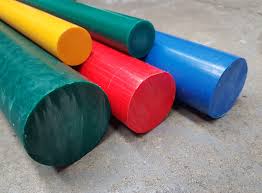Do you know what is the difference between thermoset and thermoplastic? Thermoplastics and thermosetting plastics are types of plastics that undergo different production processes and produce various properties according to their constituent materials and production methods. The terms thermoplastic and thermoset represent how materials are processed at varying temperatures.

Difference Of Reactions To High Temperatures:
1.Thermoplastics can be like water, it can be transformed between ice and water (a reversible process). Therefore, the curing process is reversible, which means they can be reshaped and recycled.
2.The thermosetting polymer forms a cross-linked structure during the curing process, thereby preventing its melting and reshaping. To use an analogy, think of thermoset plastic as concrete. Once cured, it can never return to a liquid state (an irreversible process).
Differences In Characteristics Of Thermoplastics & Thermosets
1.Thermoplastics generally provide high strength, flexibility and resistance to shrinkage, depending on the type of resin (polymer in molten liquid form). They are universal materials and can be used for anything from plastic bags to high-stress bearings and precision mechanical parts.
2.Thermosetting plastics generally have higher chemical resistance and heat resistance, as well as a stronger structure that is not easily deformed.
3.Thermosetting plastics generally have higher chemical resistance and heat resistance, as well as a stronger structure that is not easily deformed.
| Features | Thermoplastic | Thermoset plastic |
| Molecular structure | Linear polymers: weak molecular bonds in the form of linear chains | Network polymer: high degree of cross-linking and strong chemical molecular bond |
| Melting point | Melting point is lower than the degradation temperature | Melting point is higher than the degradation temperature |
| Mechanical | Flexible and elastic. High impact resistance (10 times higher than thermoset plastic). Strength comes from crystallization | Inelastic and fragile. Strong and rigid. Strength comes from cross-linking |
| Polymerization | Addition polymerization: re-polymerization in the manufacturing process (before processing) | Polycondensation: polymerization during processing |
| Microstructure | Composed of solid hard crystals and elastic amorphous regions | Composed of solid thermosetting resin and reinforcing fiber |
| Size | Size is expressed by molecular weight | Dimensions are expressed by crosslink density |
| Recyclability | Recyclable by heating or pressurizing | Not recyclable |
| Chemical resistance | Highly resistant to chemical corrosion | Heat and chemical resistance |
| Crack repair | Cracks can be easily repaired | Difficult to repair cracks |
| Process heat | Thermoplastic melts will absorb heat | Cross-linked thermosetting materials are exothermic |
| Operating temperature | Continuous use temperature is lower than thermosetting plastic | Cut higher than thermoplastic |
| Solubility | Soluble in organic solvents | Insoluble in organic solvents |
Thermoplastics are resins that are solid at room temperature, but become plastic and soft when heated. This is due to melting of crystals or flowing by exceeding the glass transition temperature. During processing, usually through injection molding or blow molding processes, the thermoplastic is in the shape of a mold, poured into it in the form of a melt, and cooled to solidify into the desired shape. Important aspects of thermoplastics are their reversibility, ability to reheat, melt again and change shape. This allows additional processing of the same material even after it is made into a solid. Processes such as extrusion, thermoforming and injection molding all depend on the properties of this resin. Some common thermoplastic materials include polyethylene (PE), polycarbonate (PC) and polyvinyl chloride (PVC).
However, like any other material, thermoplastics have their limitations. If subjected to extremely high temperatures, the material may unexpectedly soften, deform and lose some of its physical properties. Thermosetting resins or thermosetting polymers are generally liquid materials at room temperature, which harden irreversibly after heating or chemical addition. When it is placed in a mold and heated, the thermosetting material cures into a specified shape, but this curing process includes the process of forming certain bonds (called cross-linked bonds) that hold the molecules in place and change the material The basic nature of it prevents its re-transformation. Some common thermosetting materials include epoxy, polyimide and phenolic, many of which are important in composite materials.

